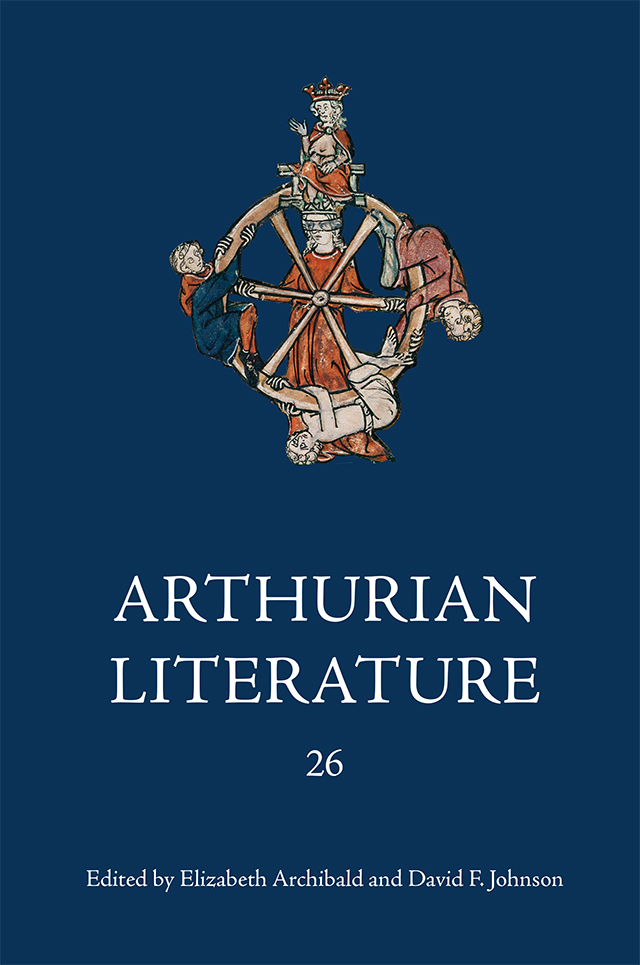Book contents
- Frontmatter
- Contents
- General Editors’ Foreword
- Contributors
- Introduction to The Morte Darthur, Parts 7 and 8
- Malory’s Text of the Suite du Merlin
- Why Arthur at All? The Dubious Arthuricity of Arthur and Gorlagon
- The Aesthetics of Communication: Sterility and Fertility in the Conte del Graal Cycle
- ‘Whyche Thyng Semeth Not to Agree With Other Histories ...’: Rome in Geoffrey of Monmouth and his Early Modern Readers
- Arthurian Texts in their Historical and Social Context
- The Post-Christian Arthur
- The Arthurian Legend in Literature, Popular Culture and the Performing Arts, 2004–2008
The Aesthetics of Communication: Sterility and Fertility in the Conte del Graal Cycle
Published online by Cambridge University Press: 02 March 2023
- Frontmatter
- Contents
- General Editors’ Foreword
- Contributors
- Introduction to The Morte Darthur, Parts 7 and 8
- Malory’s Text of the Suite du Merlin
- Why Arthur at All? The Dubious Arthuricity of Arthur and Gorlagon
- The Aesthetics of Communication: Sterility and Fertility in the Conte del Graal Cycle
- ‘Whyche Thyng Semeth Not to Agree With Other Histories ...’: Rome in Geoffrey of Monmouth and his Early Modern Readers
- Arthurian Texts in their Historical and Social Context
- The Post-Christian Arthur
- The Arthurian Legend in Literature, Popular Culture and the Performing Arts, 2004–2008
Summary
Chrétien de Troyes’ final, unfinished Arthurian romance, the Conte del Graal, has captured the imagination of many scholars over the years. One such enthusiast is the anthropologist Claude Lévi-Strauss, who has revisited it several times through the course of his career. Lévi-Strauss used Chrétien's narrative as the exemplification of ‘Percevalian’ myths, which he viewed as being inversely symmetrical to ‘Oedipal’ myths in their treatment of the theme of communication. Oedipal myths are characterised by accelerated communication: the hero has the answer to the Sphinx's riddle, but this communicative success becomes excess in the breaking of the generational taboo of incest. The plague visited on Thebes as a consequence of this transgression can be considered a reflection of this disruption of natural cycles. In contrast to these three instances of excessive communication, Lévi-Strauss proposes interrupted communication as the defining feature of Chrétien's Perceval narrative: the hero fails to ask the question which will elicit the awaited response at the Grail Castle; in doing so, he misses the opportunity to heal the Fisher King and his barren Waste Land of a kingdom. As R. Howard Bloch argues, the interruptions of linguistic communication and natural rhythms are also in a relation of interdependence with that of genealogical continuity; like a game of mirrors, each one of these parameters refers to, and can itself be read through, the other two.
The impetus for this essay came from the observation of a different kind of interruption. In common with most critics of the Conte del Graal, Lévi-Strauss limits his analysis to the portion attributed to Chrétien de Troyes and edited apart or within collections of Chrétien's romances. Yet this text spawned a vast amount of further material – four continuations and two prologues – without which it was rarely transmitted, and it is a shame that critics working through Lévi-Strauss's problematic have not pushed their interest beyond Chrétien's part of the narrative. Only four of fifteen manuscripts contain Chrétien's work without any of the later material, and the others overwhelmingly present the Conte del Graal and its continuations as a single, unified work. It is my contention that the corpus may best be studied as a cycle, so that the unity and coherence which medieval scribes and audiences evidently found in the text might be understood.
- Type
- Chapter
- Information
- Arthurian Literature , pp. 97 - 108Publisher: Boydell & BrewerPrint publication year: 2009



